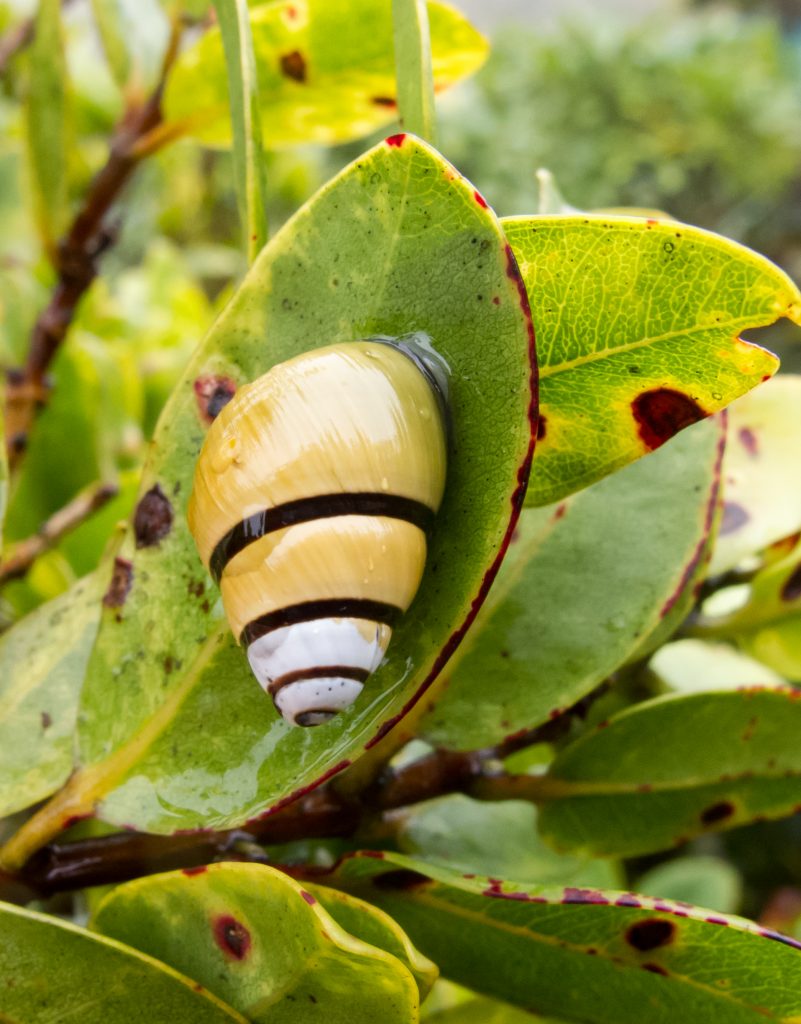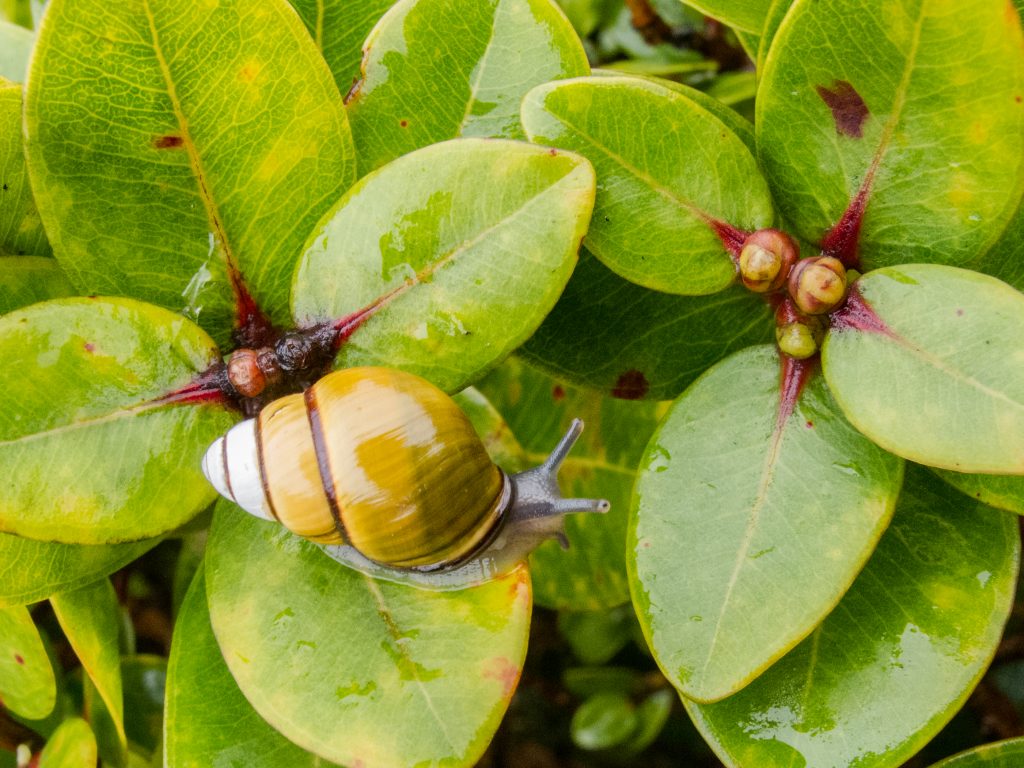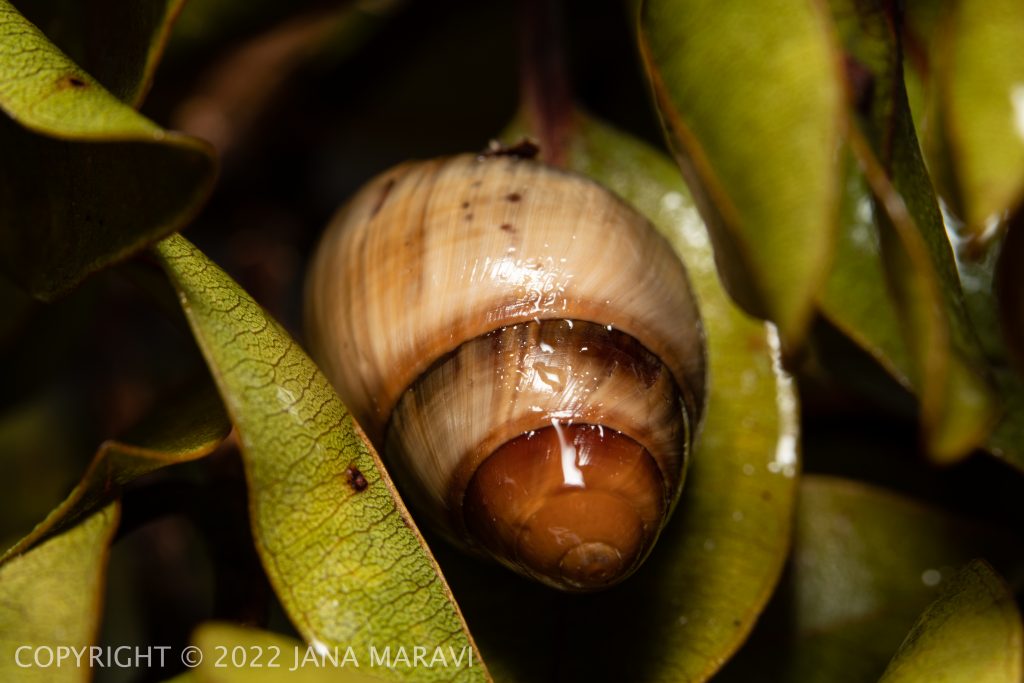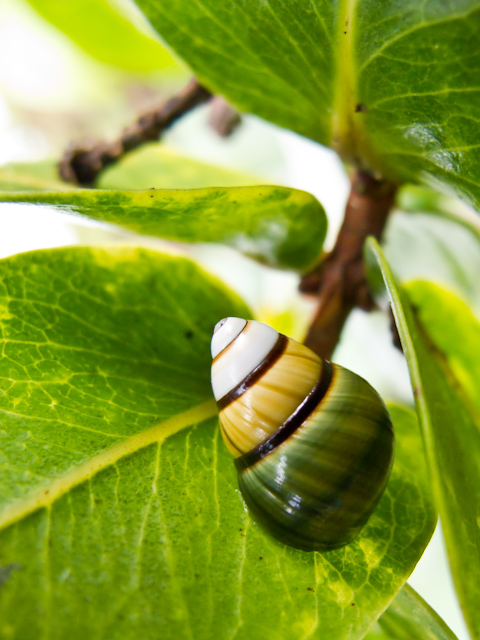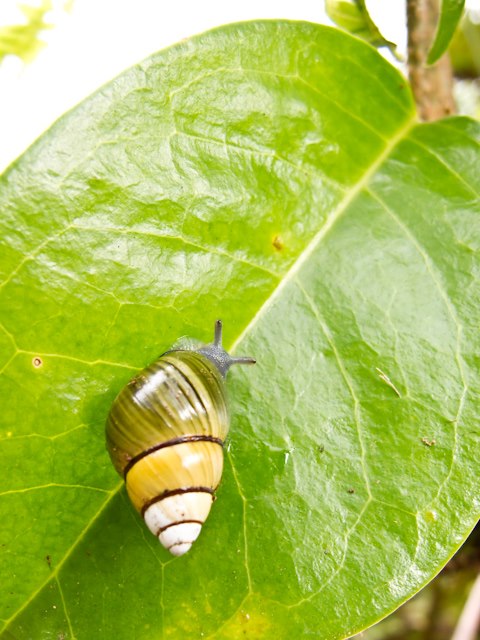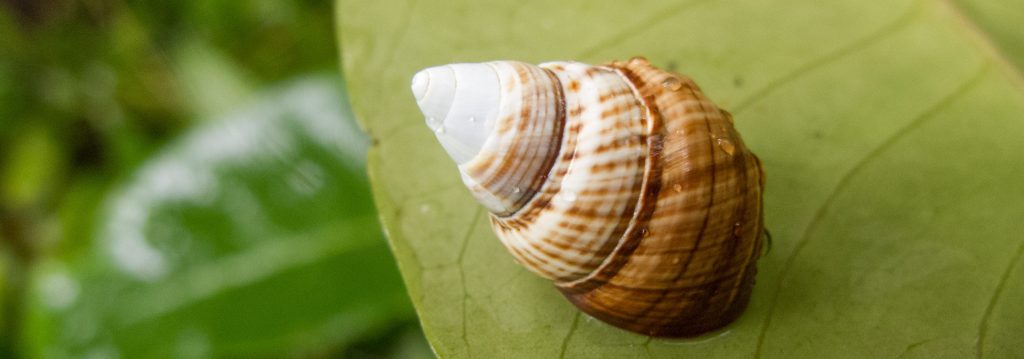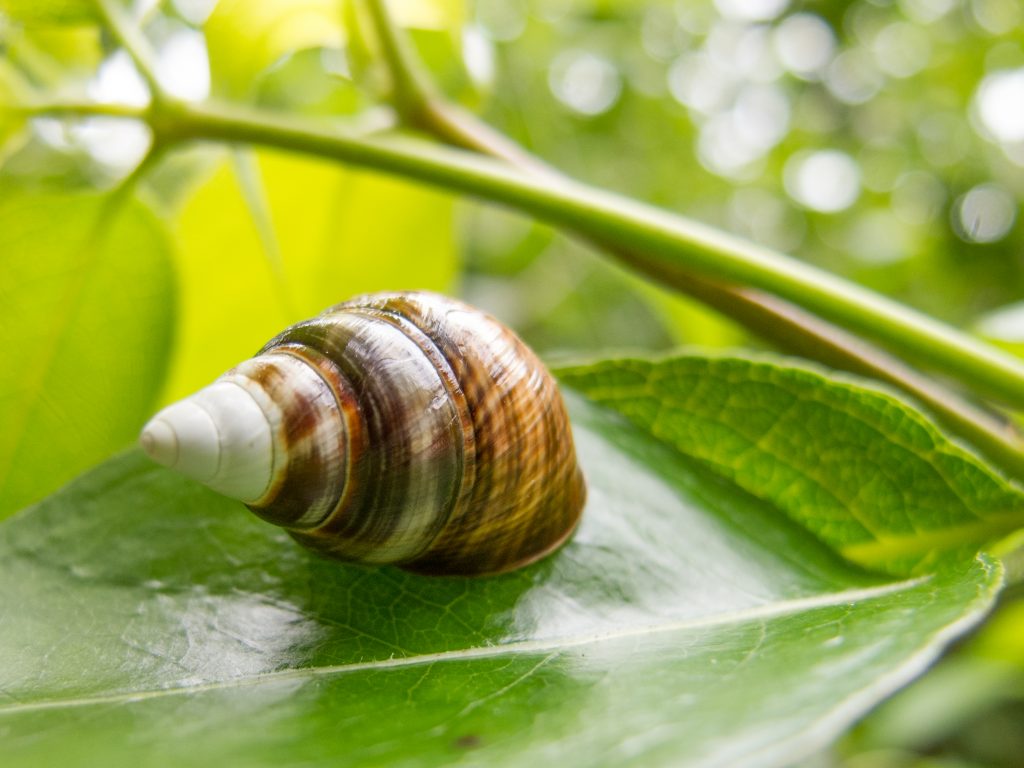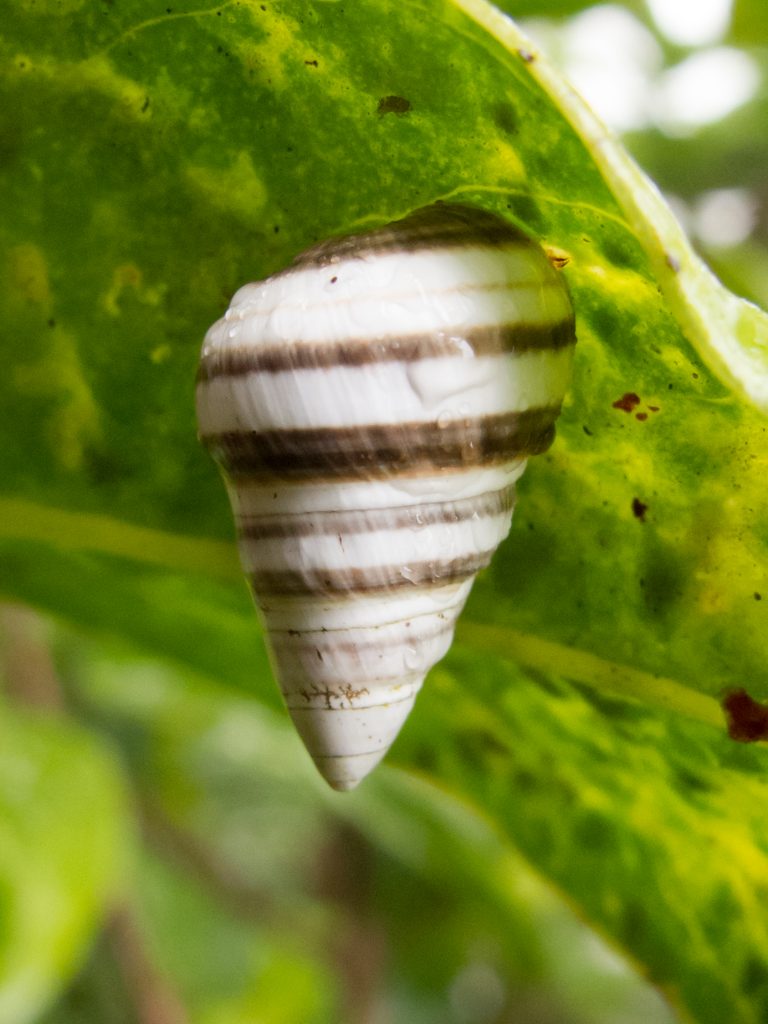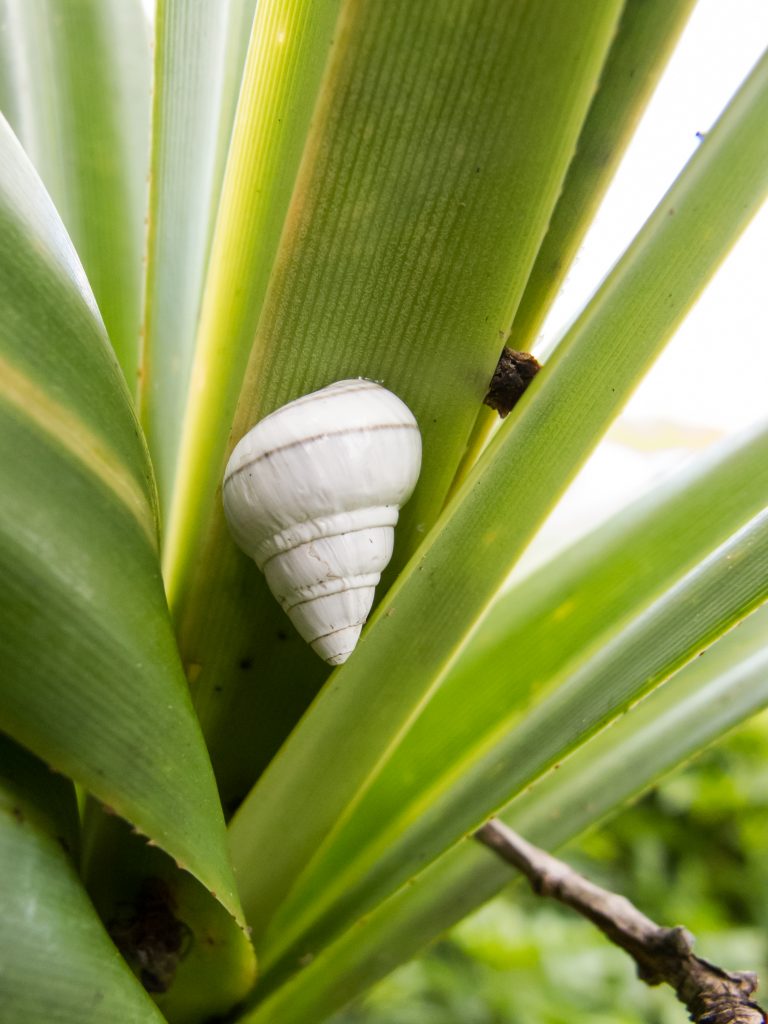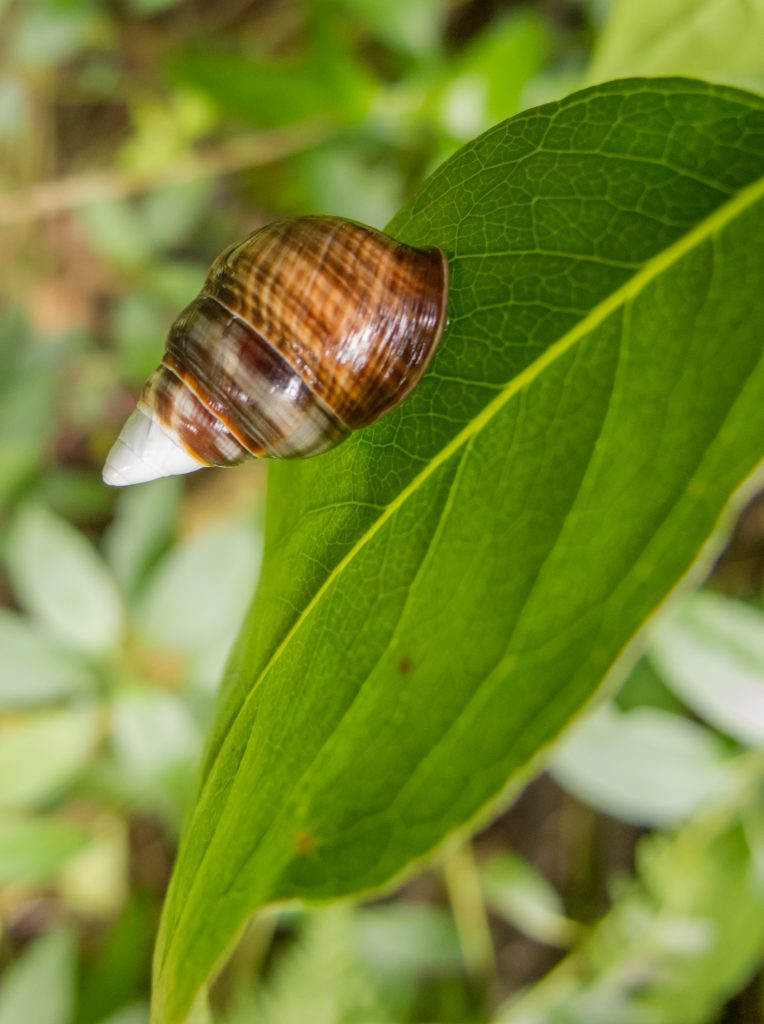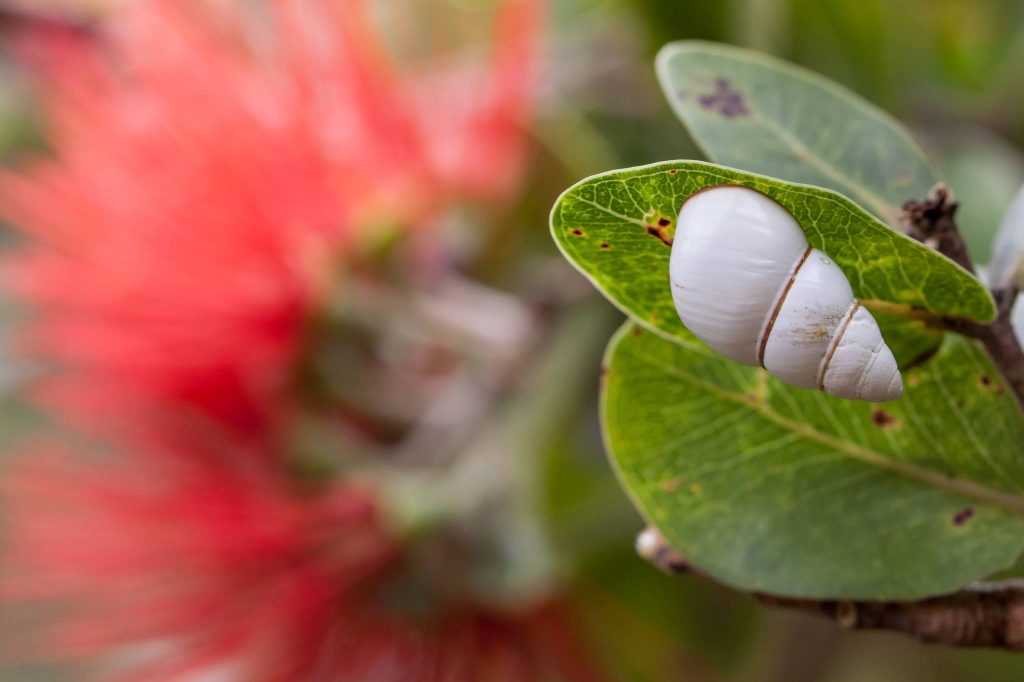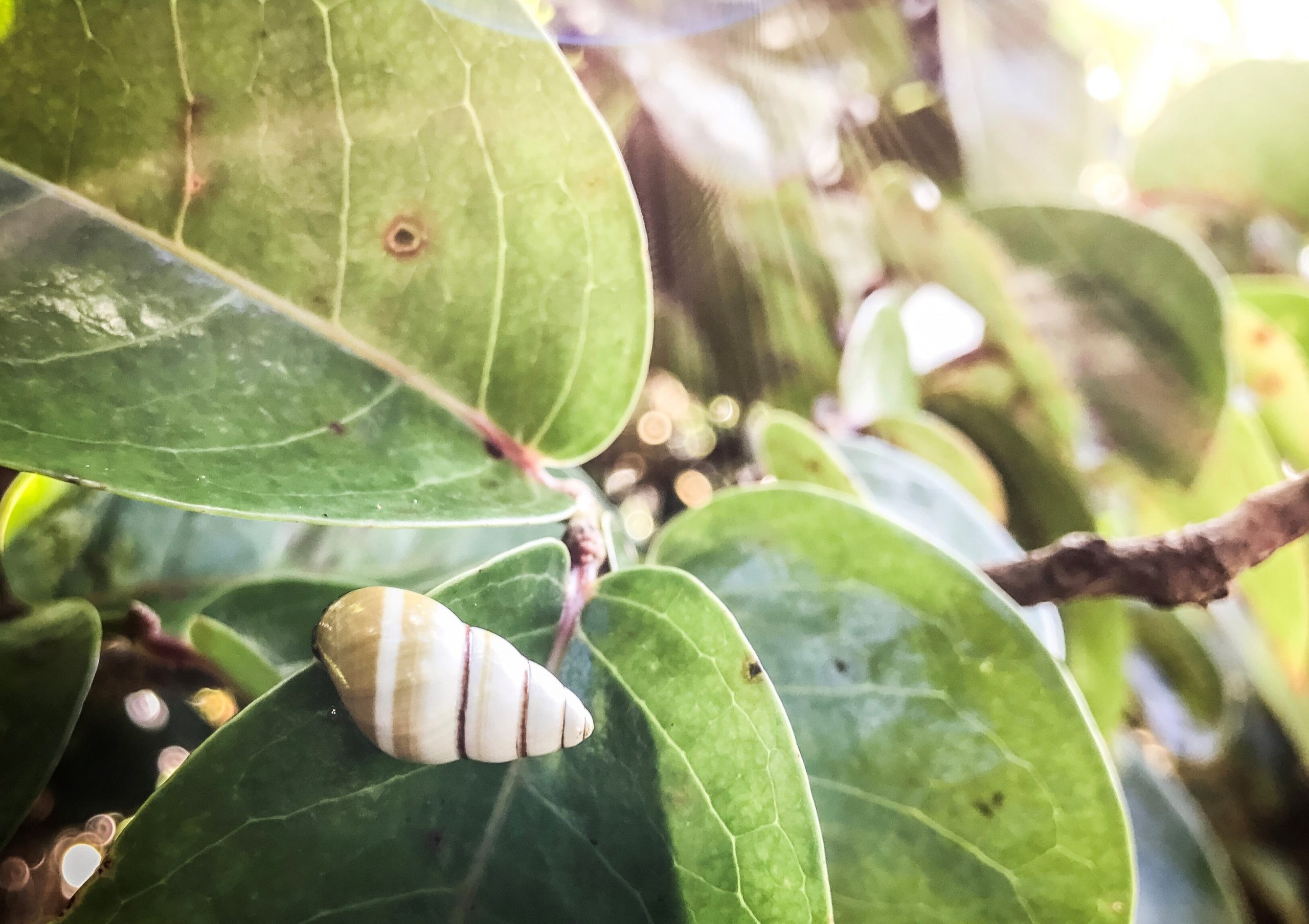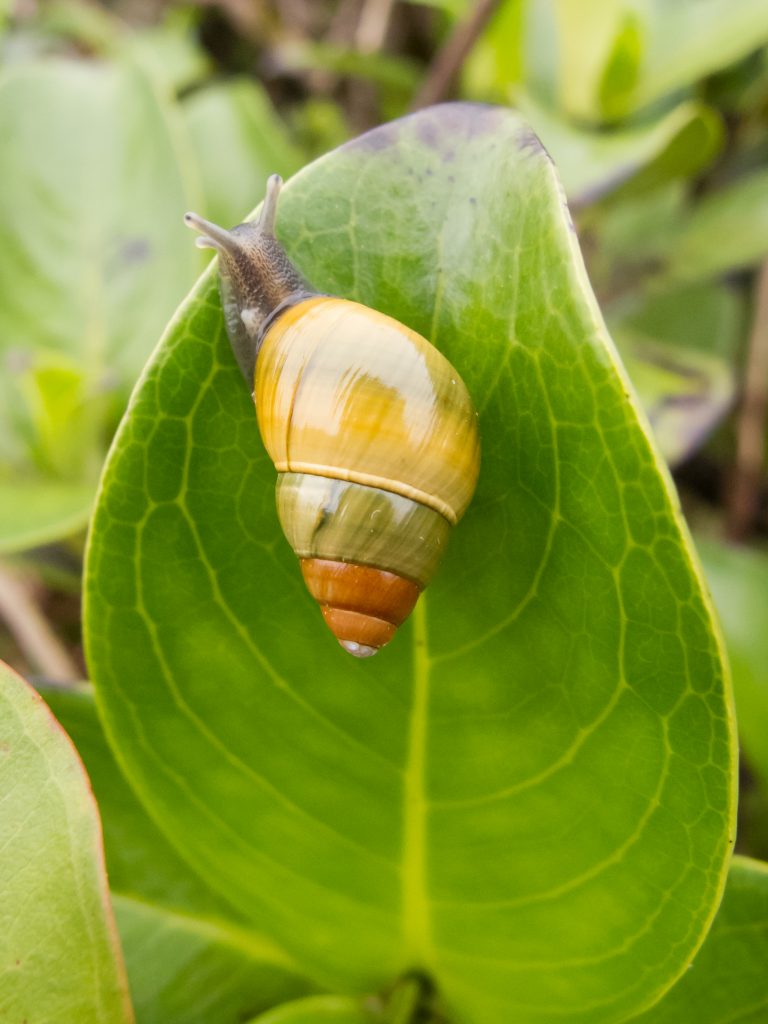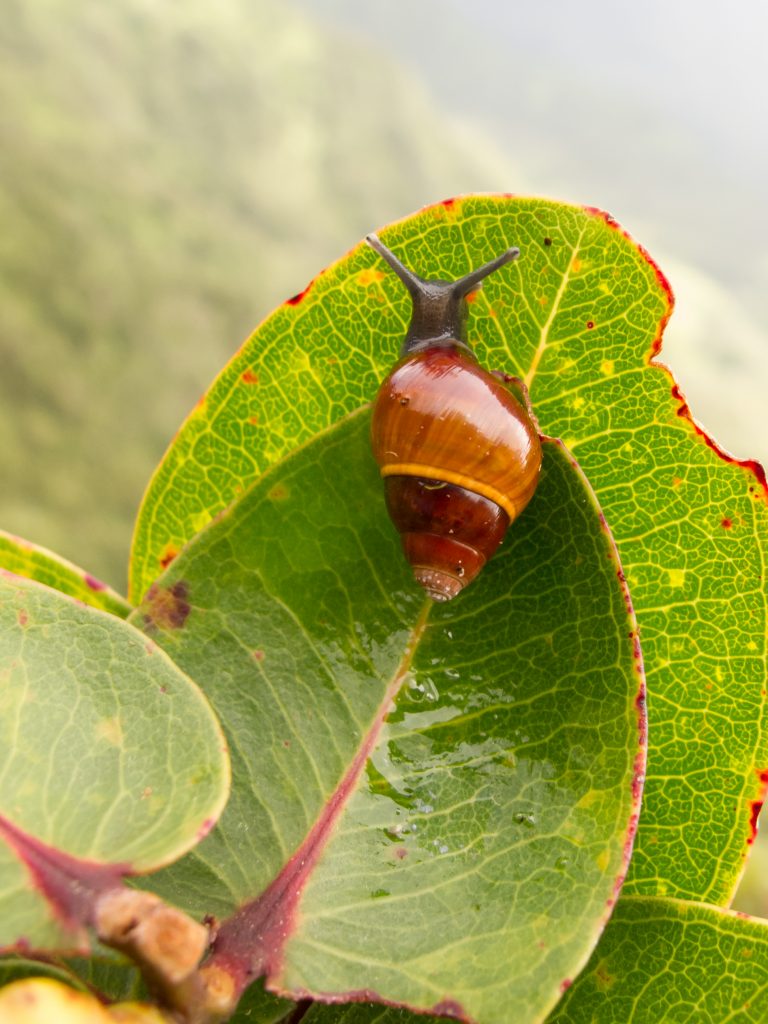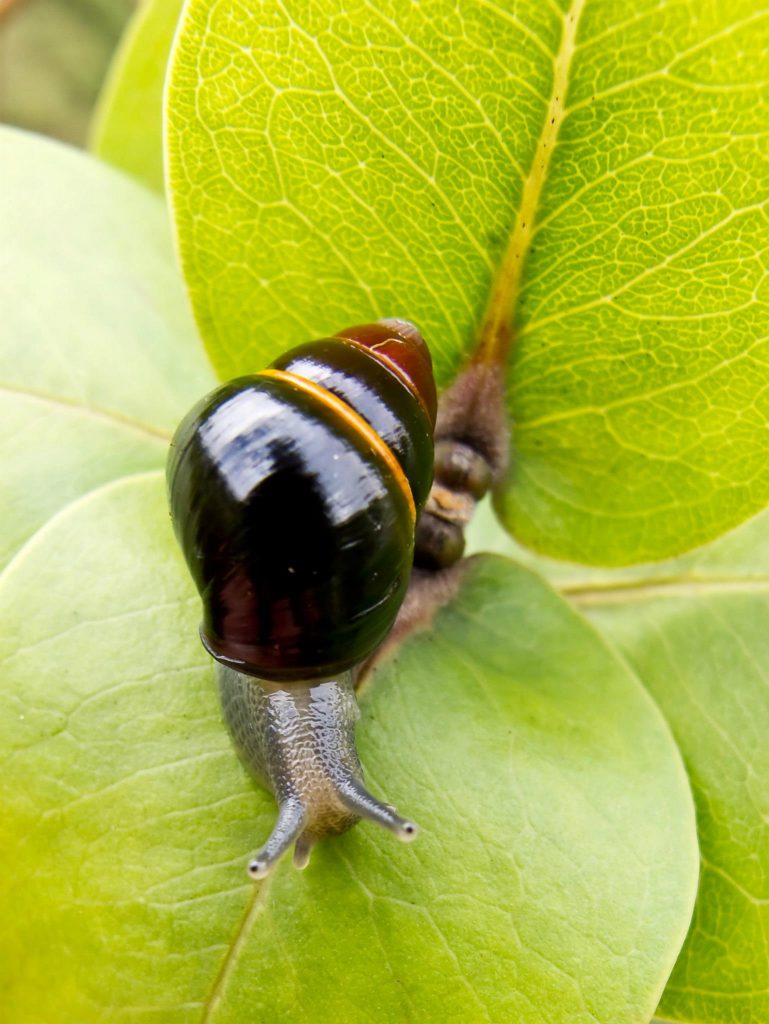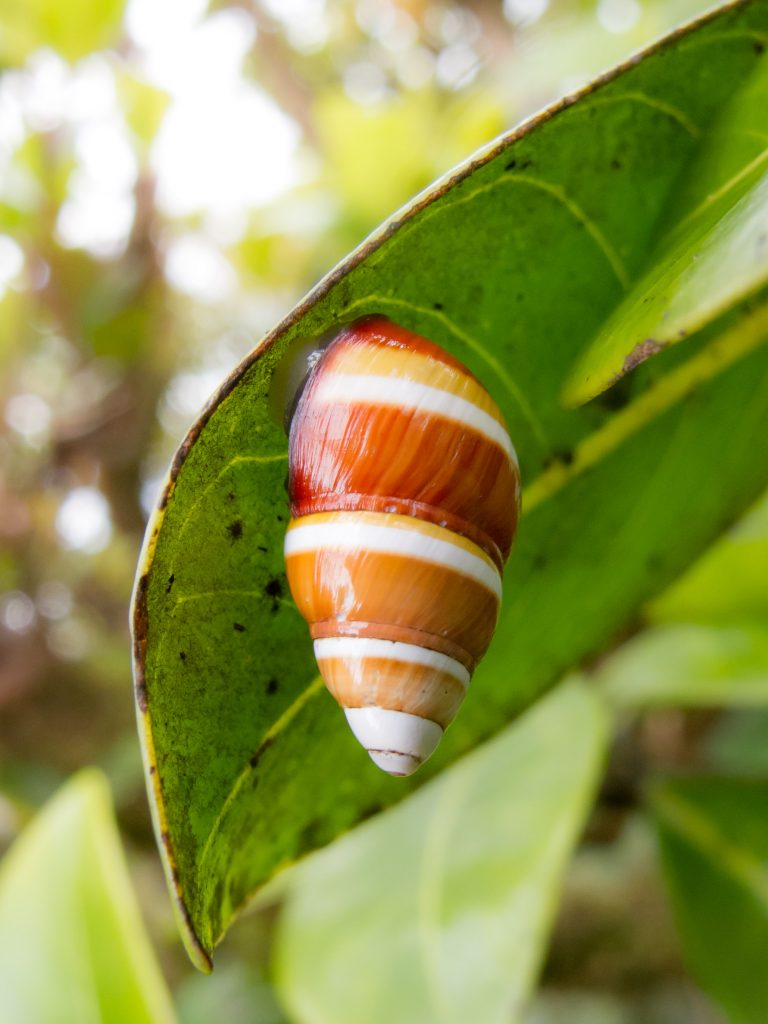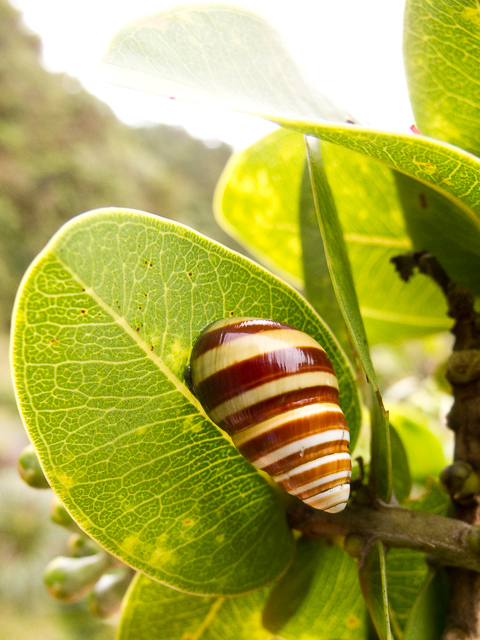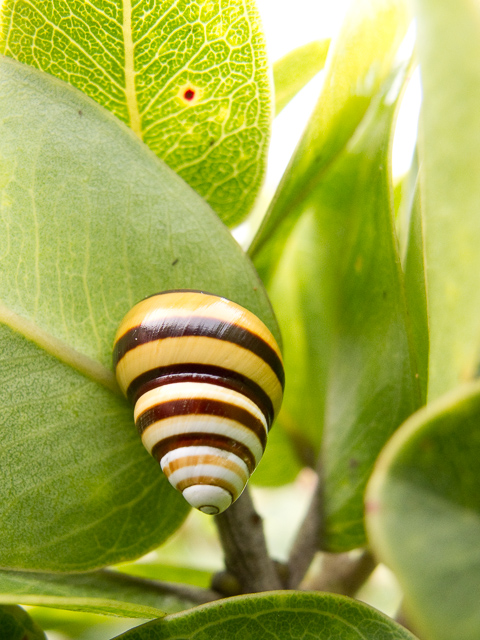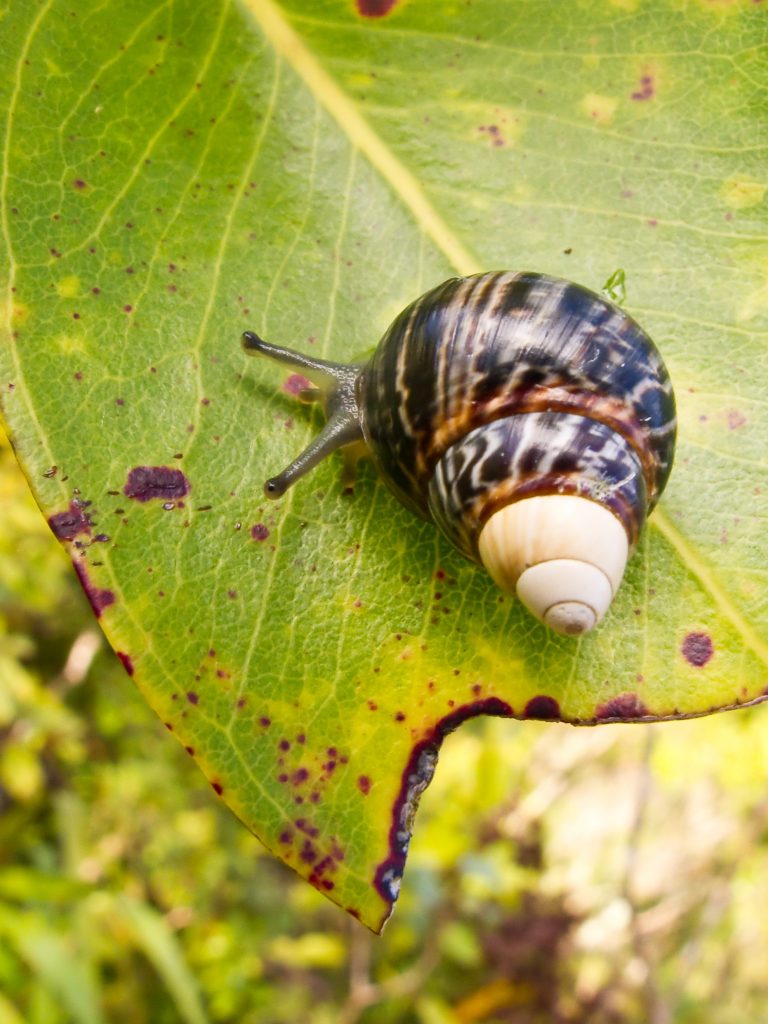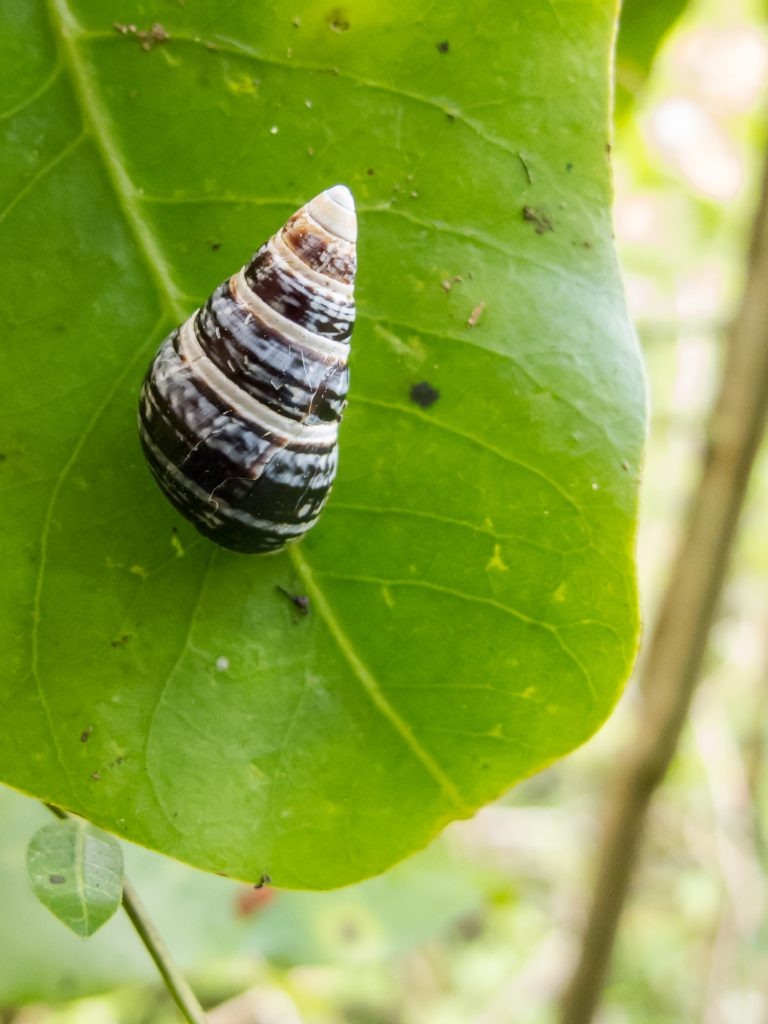Achatinella
Achatinella bulimoides
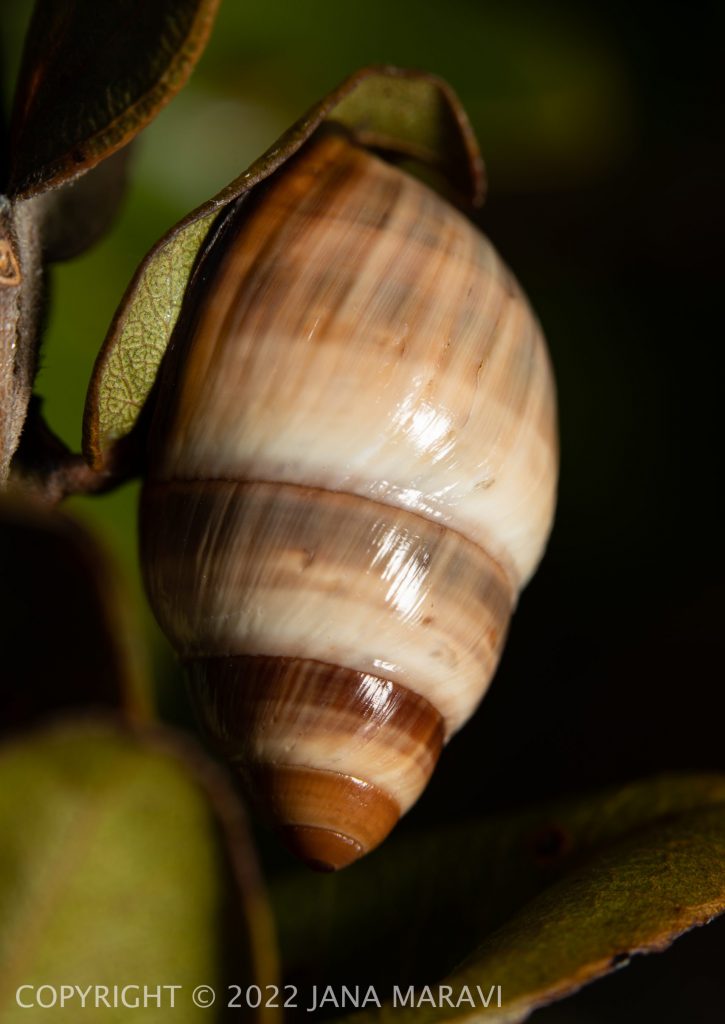 |
SPECIES STATUS:
- Federally listed as: Endangered
- State listed as: Endangered
- IUCN Red List Ranking: Critically endangered
- SEPP Ranking: Critically Imperiled
SPECIES INFORMATION: Achatinella bulimoides is endemic to the windward and leeward slopes of the Northern Ko‘olau Mountains of O‘ahu where it was once very abundant. In recent times A. bulimoides was thought to be extinct, until one population was located in 2004 on a remote windward slope of the Northern Koolau, Since 2004 two more small populations have been located all in remote isolated habitat.
DISTRIBUTION: The current known distribution of this species is restricted to three populations in a single valley on the windward side of the Ko`olau mountains above 2,000 ft elevation.
THREATS: Wild populations are susceptible to predation by rats (Rattus rattus, Rattus exulans, and Rattus nowegicus), Euglandina rosea and chameleons (Chamaeleo jacksonii). Low reproductive rates, predation and limited dispersal abilities all increase the vulnerability to demographic and environmental stochasticity such as inbreeding, loss of genetic diversity, hurricanes, high-winds, fires and drought.
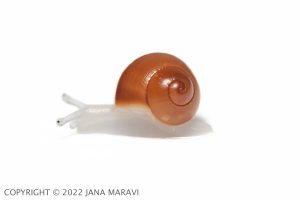 |
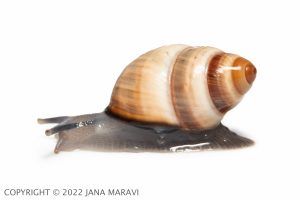 |
 |
Achatinella byrnoii
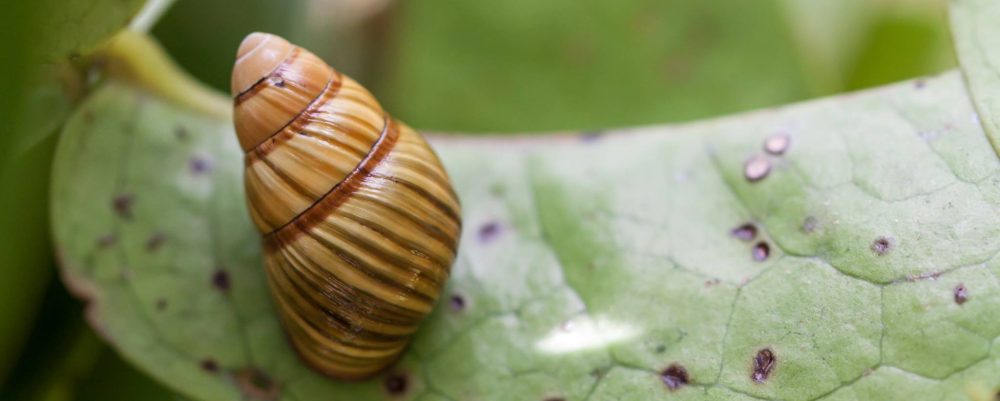
SPECIES STATUS:
- Federally listed as: Endangered
- State listed as: Endangered
- IUCN Red List Ranking: Critically endangered
- SEPP Ranking: Vulnerable
SPECIES INFORMATION: Achatinella byronii and Achatinella decipiens were historically considered to be two distinct species, and by some subspecies. Based off of current genetic and morphological data, the distinctions between the two species do not hold up. For conservation purposes A. byronii and A. decipiens are managed as one single species. A. byronii/decipiens is endemic to the Northern Ko‘olau Mountains of O‘ahu where it is currently one of the most abundant of the extant Achatinella species. A. byronii/decipiens is distinguishable from other Achatinella species by unique irregular wrinkles on the body whorl of most shells.
DISTRIBUTION: This species is restricted to the Northern Ko‘olau Mountains with populations existing at elevations above 2,000 ft.
THREATS: Wild populations are susceptible to predation by rats (Rattus rattus, Rattus exulans, and Rattus nowegicus), Euglandina rosea and chameleons (Chamaeleo jacksonii). Low reproductive rates, predation and limited dispersal abilities all increase the vulnerability of populations to demographic and environmental stochasticity such as inbreeding, loss of genetic diversity, hurricanes, high-winds, fires and drought.
Achatinella concavospira
SPECIES STATUS:
- Federally listed as: Endangered
- State listed as: Endangered
- IUCN Red List Ranking: Critically endangered
- SEPP Ranking: Critically imperiled
SPECIES INFORMATION: Achatinella concavospira is endemic the Central and Southern Wai‘anae Mountains of O‘ahu. Currently it is one of only two remaining Achatinella spp. from the region. Historically populations were known from locations throughout the present day Honouliuli State Forest Reserve. While A. concavospira individuals show similar shell coloring to some morphs of A. mustelina (also from the Wai‘anae Mts.), genetic studies have shown that A. concavospira is more closely related to A. apexfulva from the Ko‘olau Mountains.
DISTRIBUTION: Central – Southern Wai`anae Mountains. This species is restricted to pockets of remaining native mesic forest habitat in the upper elevations of the Wai‘anae Mountains.
THREATS: Wild populations are susceptible to predation by rats (Rattus rattus, Rattus exulans, and Rattus nowegicus), Euglandina rosea and chameleons (Chamaeleo jacksonii). Low reproductive rates, habitat fragmentation, predation and limited dispersal abilities all increase the vulnerability of populations to demographic and environmental stochasticity such as inbreeding, loss of genetic diversity, hurricanes, high-winds, fires and drought.
Achatinella decipiens
SPECIES STATUS:
- Federally listed as: Endangered
- State listed as: Endangered
- IUCN Red List Ranking: Critically endangered
- SEPP Ranking: Vulnerable
SPECIES INFORMATION: Achatinella byronii and Achatinella decipiens were historically considered to be two distinct species, and by some subspecies. Based off of current genetic and morphological data, the distinctions between the two species do not hold up. For conservation purposes A. byronii and A. decipiens are managed as one single species. A. byronii/decipiens is endemic to the Northern Ko‘olau Mountains of O‘ahu where it is currently one of the most abundant of the extant Achatinella species. A. byronii/decipiens is distinguishable from other Achatinella species by unique irregular wrinkles on the body whorl of most shells.
DISTRIBUTION: This species is restricted to the Northern Ko‘olau Mountains with populations existing at elevations above 2,000 ft.
THREATS: Wild populations are susceptible to predation by rats (Rattus rattus, Rattus exulans, and Rattus nowegicus), Euglandina rosea and chameleons (Chamaeleo jacksonii). Low reproductive rates, predation and limited dispersal abilities all increase the vulnerability of populations to demographic and environmental stochasticity such as inbreeding, loss of genetic diversity, hurricanes, high-winds, fires and drought.
Achatinella fulgens

SPECIES STATUS:
- Federally listed as Endangered
- State listed as Endangered
- State recognized as Endemic
- IUCN Red List Ranking – Critically endangered
SPECIES INFORMATION: Achatinella fulgens is endemic to the Southern Ko‘olau Mountains of O‘ahu, with a historical range extending from Wa‘ahila Ridge to Niu Valley. In recent times A. fulgens has experienced drastic range reductions. Currently there are only eight A. fulgens individuals known in the entire world, making it one of the rarest animals in the world, and one of the top priorities for SEPP. Interestingly, A. fulgens is the only Achatinella species left from the lower elevations of the Koʻolau Mountains.
DISTRIBUTION: This species remains in only one valley in the southern Ko‘olau Mountains.
LOCATION AND CONDITION OF KEY HABITAT: Low elevation guava forest of the Koʻolau Mountains
THREATS: Wild populations are susceptible to predation by rats (Rattus rattus, Rattus exulans, and Rattus nowegicus), Euglandina rosea and chameleons (Chamaeleo jacksonii). Low reproductive rates, predation and limited dispersal abilities all increase the vulnerability of populations to demographic and environmental stochasticity such as inbreeding, loss of genetic diversity, hurricanes, high-winds, fires and drought.
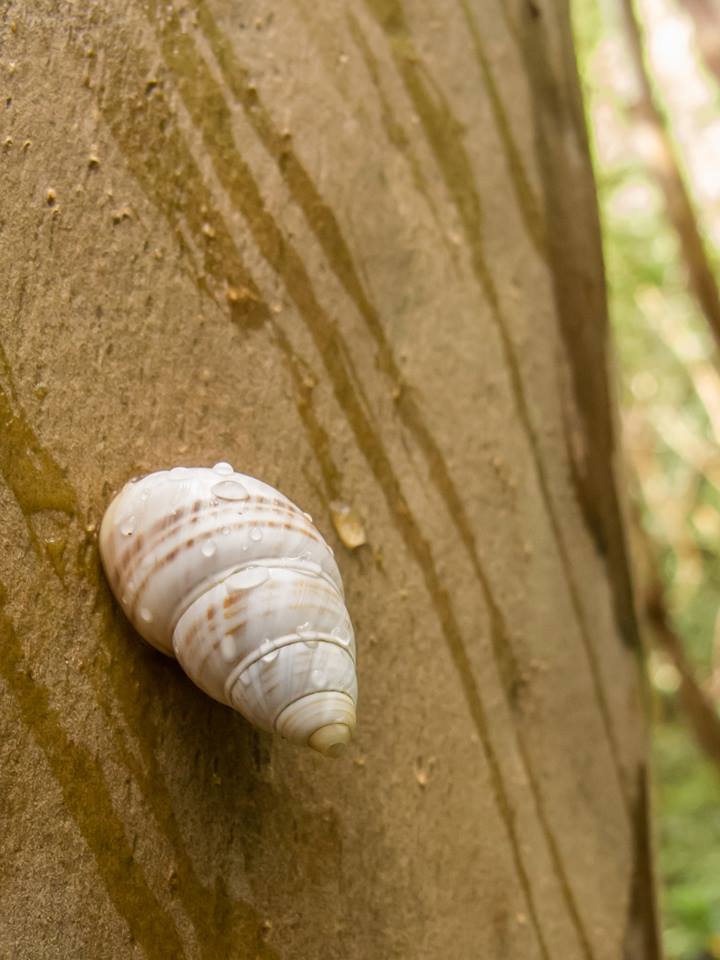
Achatinella fuscobasis

SPECIES STATUS:
- Federally listed as: Endangered
- State listed as: Endangered
- IUCN Red List Ranking: Critically endangered
- SEPP Ranking: Critically Imperiled
SPECIES INFORMATION: Achatinella fuscobasis was historically abundant in summit areas on the leeward slopes of the Southern Ko‘olau Mountains of O‘ahu. In recent times A. fuscobasis has experienced drastic population declines and range reductions. Currently only one wild population is known. Fortunately, this species has been reared in captivity with much success.
DISTRIBUTION: Though formerly abundant in the southern Ko‘olau mountains, this species has nearly vanished from the wild. One population remains in a single valley above 2,000 ft.
THREATS: Wild populations are susceptible to predation by rats (Rattus rattus, Rattus exulans, and Rattus nowegicus), Euglandina rosea and chameleons (Chamaeleo jacksonii). Low reproductive rates, predation and limited dispersal abilities all increase the vulnerability of populations to demographic and environmental stochasticity such as inbreeding, loss of genetic diversity, hurricanes, high-winds, fires and drought.
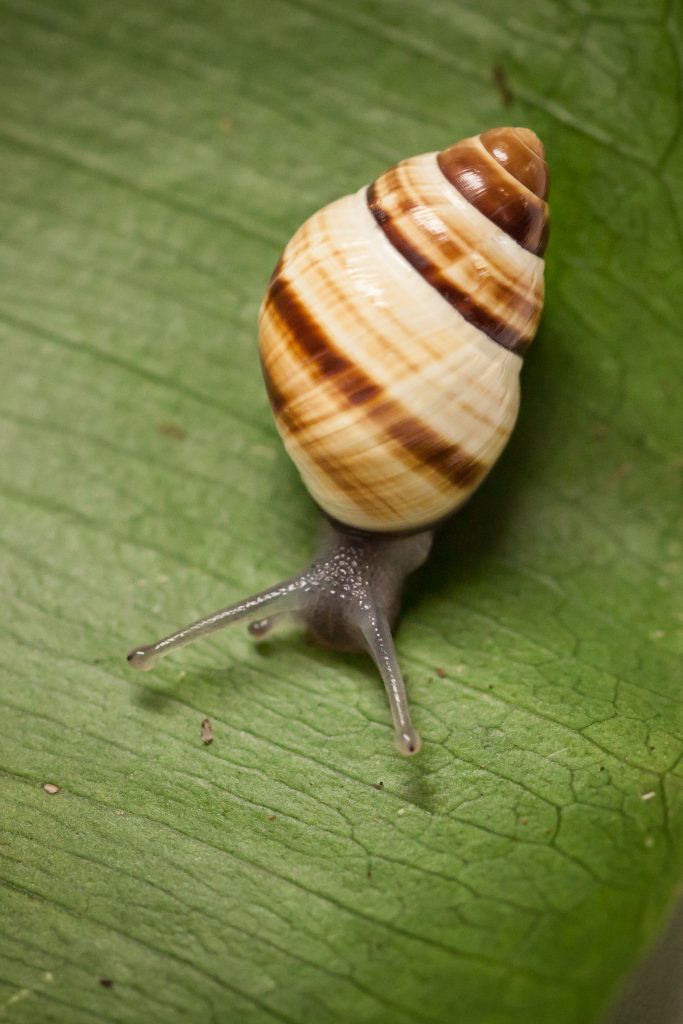
Achatinella lila

SPECIES STATUS:
- Federally listed as: Endangered
- State listed as: Endangered
- IUCN Red List Ranking: Critically endangered
- SEPP Ranking: Critically Imperiled
SPECIES INFORMATION: Achatinella lila used to be one of the more abundant species in the Northern Ko‘olau Mountains of O‘ahu, however recent extirpations have restricted A. lila to only two locations on the windward slopes of a single valley. Fortunately, this species has survived relatively well in captive propagation.
DISTRIBUTION: This species is restricted to two locations in the Northern Ko‘olau Mountains above 2,000 ft elevation. This species is kept in captive propagation and is planned for relocation to a predator-proof exclosure in the Ko‘olau Mountains.
THREATS: Wild populations are susceptible to predation by rats (Rattus rattus, Rattus exulans, and Rattus nowegicus), Euglandina rosea and chameleons (Chamaeleo jacksonii). Low reproductive rates, predation and limited dispersal abilities all increase the vulnerability of populations to demographic and environmental stochasticity such as inbreeding, loss of genetic diversity, hurricanes, high-winds, fires and drought.
Achatinella livida

SPECIES STATUS:
- Federally listed as: Endangered
- State listed as: Endangered
- IUCN Red List Ranking: Critically endangered
- SEPP Ranking: Critically Imperiled
SPECIES INFORMATION: Achatinella livida is endemic to the northern Ko‘olau Mountains of O‘ahu, where this species has experienced massive range reductions and local extirpations. Currently, A. livida is only known from five discrete sites along the summit. A. livida is now the northernmost occurring Achatinella spp. in the Ko‘olau Mountains.
DISTRIBUTION: This species is now restricted to several locations along the Northern Koʻolau summit.
THREATS: Wild populations are susceptible to predation by rats (Rattus rattus, Rattus exulans, and Rattus nowegicus), Euglandina rosea and chameleons (Chamaeleo jacksonii). Low reproductive rates, predation and limited dispersal abilities all increase the vulnerability of populations to demographic and environmental stochasticity such as inbreeding, loss of genetic diversity, hurricanes, high-winds, fires and drought.
Achatinella mustelina

SPECIES STATUS:
- Federally listed as: Endangered
- State listed as: Endangered
- IUCN Red List Ranking :Critically endangered
- SEPP Ranking: Vulnerable
SPECIES INFORMATION: Achatinella mustelina is endemic to the Wai‘anae Mountains of O‘ahu and is currently one of the most widespread and abundant members of its genus. Populations now mostly inhabit discrete patches of mesic and wet forest habitat above 2000ft. Because this species is so widespread, it has been divided into six Evolutionary Significant Units (ESU). ESUs are managed as separate species for conservation purposes. Though the species is widespread as a whole, individual ESUs vary in their rarity.
DISTRIBUTION: Wai‘anae Mountains above 2,000 feet elevation. The comparatively wide geographical range of this species is divided into six Evolutionarily Significant Units (ESUs) to protect the genetic diversity that remains. Once contiguous across the mountain range, this species is now restricted to fragmented populations within the ESUs.
THREATS: Wild populations are susceptible to predation by rats (Rattus rattus, Rattus exulans, and Rattus nowegicus), Euglandina rosea and chameleons (Chamaeleo jacksonii). Low reproductive rates, predation and limited dispersal abilities all increase the vulnerability of populations to demographic and environmental stochasticity such as inbreeding, loss of genetic diversity, hurricanes, high-winds, fires and drought.
Achatinella sowerbyana

SPECIES STATUS:
- Federally listed as: Endangered
- State listed as: Endangered
- IUCN Red List Ranking: Critically endangered
- SEPP Ranking: Imperiled
SPECIES INFORMATION: Achatinella sowerbyana is endemic to the Northern Ko`olau Mountains, where it is one of the most abundant extant Achatinella species. Populations are typically restricted to small patches of wet forest habitat in summit regions.
DISTRIBUTION: This species was broadly distributed in the Northern Ko`olau Mountains however, it now only occurs at several sites at elevations exceeding 2,000 ft.
THREATS: Wild populations are susceptible to predation by rats (Rattus rattus, Rattus exulans, and Rattus nowegicus), Euglandina rosea and chameleons (Chamaeleo jacksonii). Low reproductive rates, predation and limited dispersal abilities all increase the vulnerability of populations to demographic and environmental stochasticity such as inbreeding, loss of genetic diversity, hurricanes, high-winds, fires and drought.
